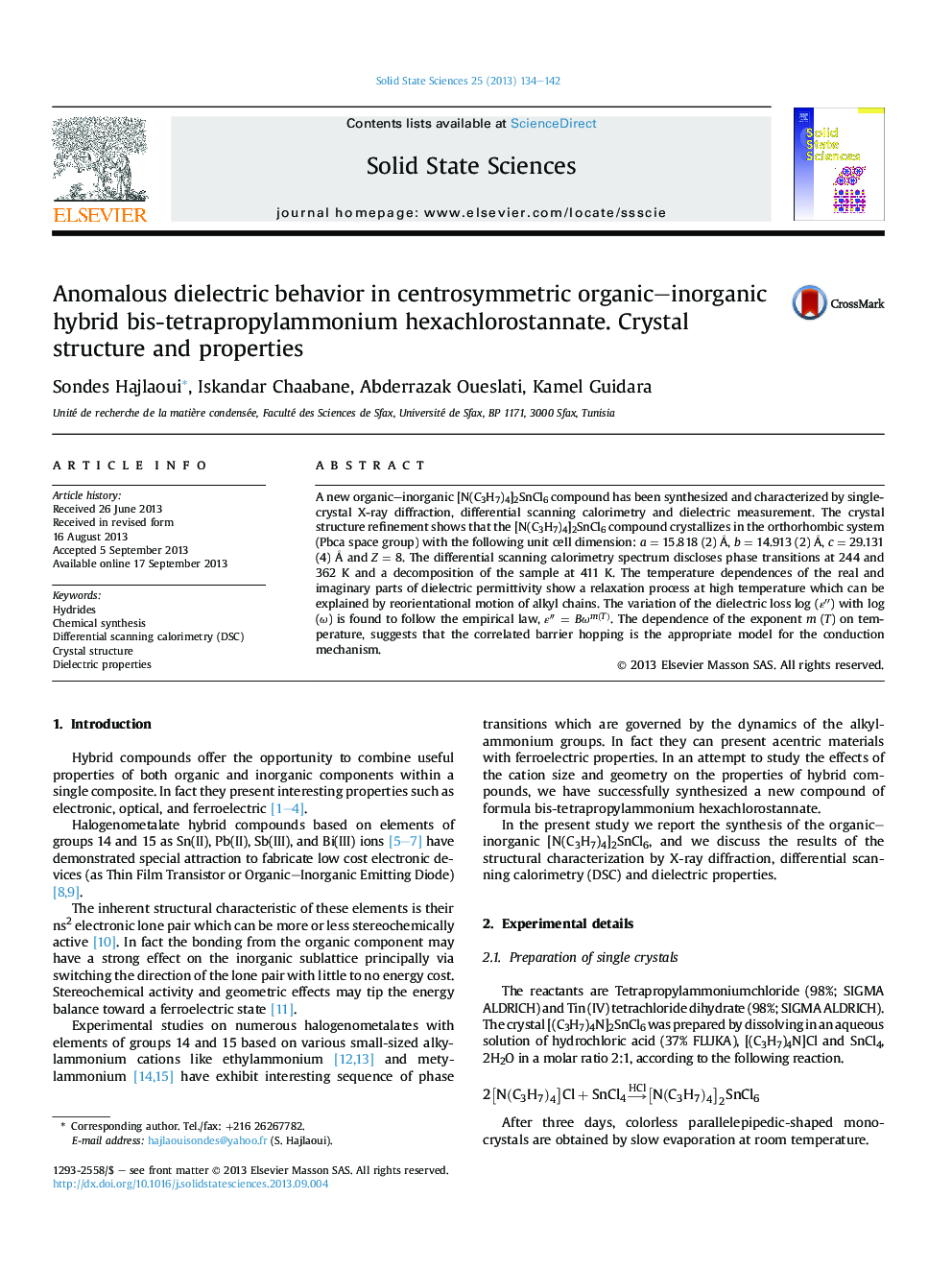| Article ID | Journal | Published Year | Pages | File Type |
|---|---|---|---|---|
| 1504602 | Solid State Sciences | 2013 | 9 Pages |
A new organic–inorganic [N(C3H7)4]2SnCl6 compound has been synthesized and characterized by single-crystal X-ray diffraction, differential scanning calorimetry and dielectric measurement. The crystal structure refinement shows that the [N(C3H7)4]2SnCl6 compound crystallizes in the orthorhombic system (Pbca space group) with the following unit cell dimension: a = 15.818 (2) Å, b = 14.913 (2) Å, c = 29.131 (4) Å and Z = 8. The differential scanning calorimetry spectrum discloses phase transitions at 244 and 362 K and a decomposition of the sample at 411 K. The temperature dependences of the real and imaginary parts of dielectric permittivity show a relaxation process at high temperature which can be explained by reorientational motion of alkyl chains. The variation of the dielectric loss log (ε″ε″) with log (ω ) is found to follow the empirical law, ε″=Bωm(T)ε″=Bωm(T). The dependence of the exponent m (T) on temperature, suggests that the correlated barrier hopping is the appropriate model for the conduction mechanism.
Graphical abstractFigure optionsDownload full-size imageDownload as PowerPoint slide
